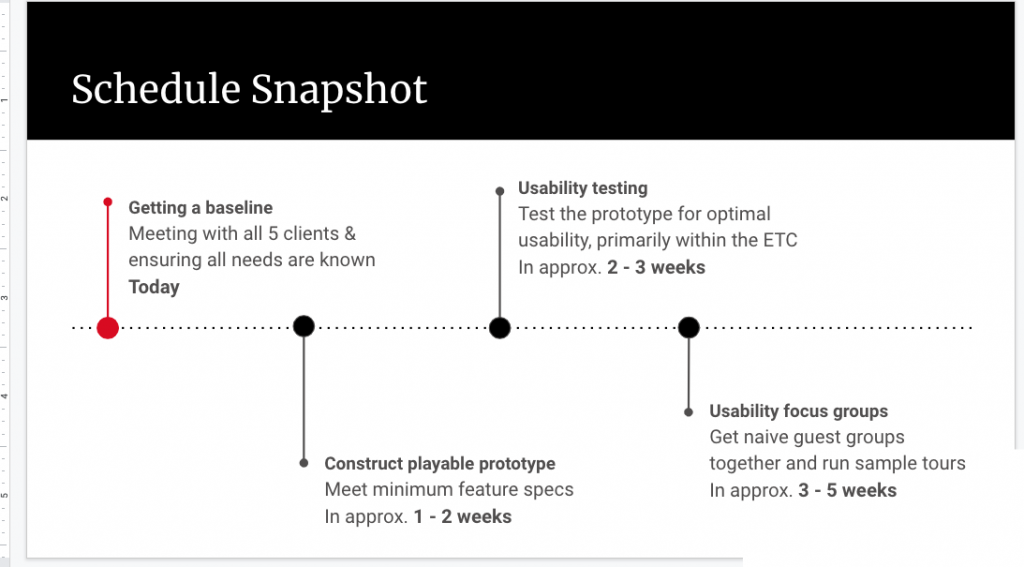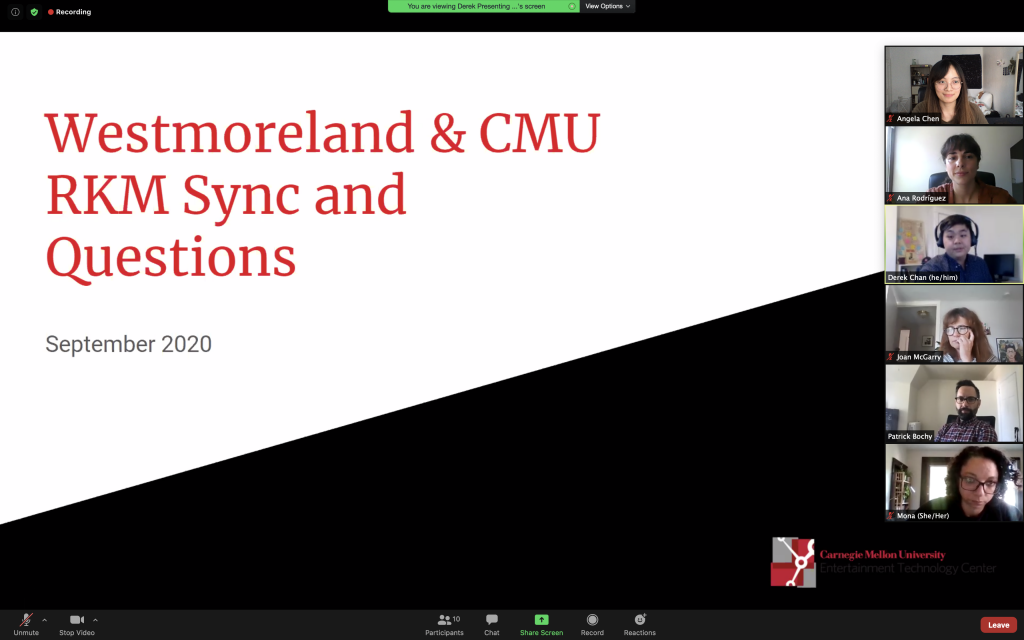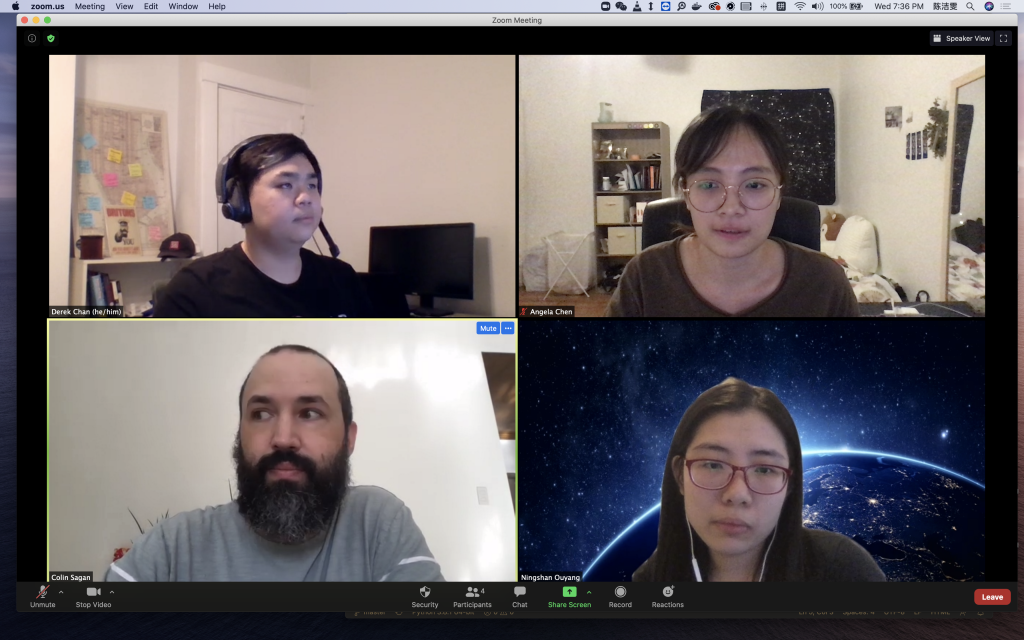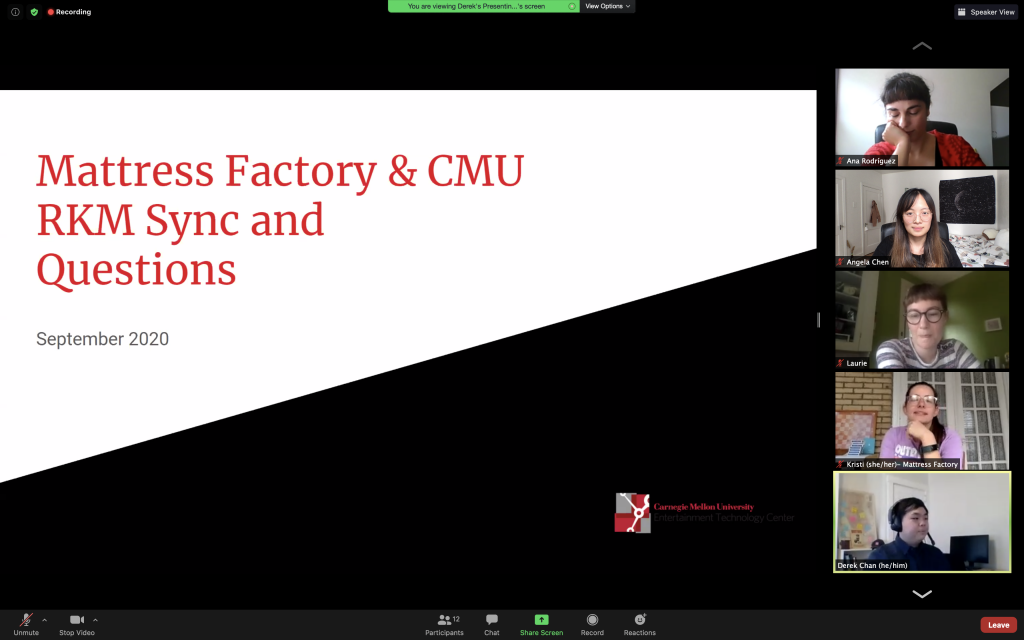Week 4: Meetings, Perspectives, and Reflection
Week 4 was full of meetings with clients, faculty, and industry professionals. While these meetings were very insightful and eye-opening, they ultimately came at the cost of build progress.
We have taken this opportunity to plan next steps for the build. The steps for next week focus on the simplest implementation of core functionality. We also plan to integrate Derek and Kat into the WordPress development environment to decrease delays between visual design and technical implementation. In essence, if Kat and Derek can prototype in WordPress, then Ningshan and Angela spend less time translating that functionality into the build.
Notable Meetings and Outcomes
1. Quarters: Complete, feedback collected and documented (see attached pdf)
2. Frick Museum: Complete, teams introduced, and next steps communicated
a. Playtest Dates: Frick wants to have concrete dates for playtesting so they could organize staff participation and museum guest participation.

3. AWAACC: Complete. AWAACC sees use for the tool
a. Excitement about guests: AWAACC was excited to hear that we want to work together to make the best experience possible for their guests.
b. Logo and Marketing package: received from Ana
c. Lit Fridays: Kat expressed interest in participation in the virtual Lit Fridays event.
4. Westmoreland
a. Ongoing Conversation: Framing the project as a collaboration/ongoing conversation about what is and isn’t working about virtual events made them excited
b. Owl Workshop: Kat was able to sit in on their Owl workshop on Wednesday

5. Mosswood Creative: Introduced Ningshan, Angela, and Kat to professional web developers Colin and Raeanne Sagan of Mosswood Creative
a. Show Client prototypes fast and dirty: Museum.Live was recommended to prototype on WordPress and show any prototype to client. Key phrase “Does this meet your needs? How does the current prototype fail to do what you want it to do”
b. Little time, lots of features: The Figma prototye could take a full semester’s worth of work to implement in its current state
c. Default Implementation: Building a “functional, but ugly” site with WordPress’s default configuration is fast.

6. Mattress Factory: Complete
a. Collaborative list editing: Mattress Factory expressed an interest in collaborating and working on lists together. This raised several questions regarding implementation
b. Location-based virtual tours: Mattress Factory works with site-specific art installations as well as tours of living artists’ studios

7. Monticello Virtual Tour: The team virtually visited the Monticello the home of Thomas Jefferson
a. Levels of engagement: The team was really interested in the oral histories of the slaves owned (and sometimes related) to Thomas Jefferson. Other tour goers were interested in plates.
b. Walking tour/Camera mount: the tour host spoke into a microphone connected to an iPad that was hosting the zoom call. This design was very impressive and effective in communicating the spatial qualities of the Monticello estate.
Project progress by Discipline
Design
- Narrative walkthrough: completed
- Documentation: begun based off of conversations with museums, quarters feedback, and industry recommendations
Programming
- MVP features: identified and assigned

ETC Materials
- Poster: in 3rd iteration following feedback from ETC design faculty.
- Half-sheet: pending
- Website: Blogs online. Design in progress. Scott Stevens commented on lack of polish
Goals for Next week are as follows
1. Begin designing a Tour ourselves (likely of the ETC): the goal of this exercise would be to force the team to “eat our own dogfood.” We wouldn’t necessarily design a tour using the MVP website. Rather, we would design a Zoom-virtual tour to go through the steps of doing so, i.e. see the needs of the tool from the intended users of the tool (the museum staff).
2. Reach an online MVP that can execute the following steps: Upload images, organize Images into Stops, organize Stops into Tours, display tours on a front-end.
3. Set a Playtest schedule with definite dates: several museums requested specific dates to give feedback on the build.
4. Begin on-boarding documentation for use with Museum staff:
